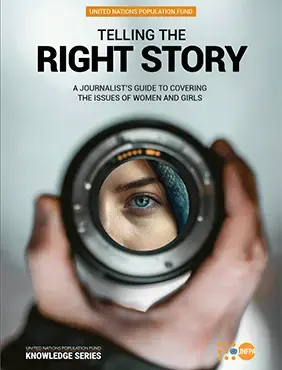“Throughout this war,” explains Noura, a Syrian refugee living in Iraq, “many women like me completely lost faith in the media, including women who trusted journalists to tell the stories of the violence they experienced. We thought that journalism would help bring justice, but it soon became clear that the media doesn’t understand what we go through and how unfairly we’re treated.”
For women and girls like Noura, many of whom grapple with various forms of gender inequality and gender-based violence (GBV) on a daily basis, journalism constitutes one of the few available avenues for their stories to be heard. It remains one of the most effective mediums for amplifying the voices of the vulnerable and speaking truth to power — a function that becomes even more critical during humanitarian crises.
For a journalist, covering the issues of women and girls, such as sexual and reproductive health and rights (SRHR), bodily autonomy, and GBV, can be a challenging undertaking. In addition to being widely underreported and misunderstood, discussions on these topics are often fraught with stigma, disinformation, politicisation, and other barriers that impede accurate, impactful coverage. More importantly, journalists need to be aware that their coverage — if not conducted under strict, professional and ethical standards — can be harmful to women and girls in a multitude of ways, particularly when it comes to survivors of GBV. Between insensitive interviewing techniques, inaccurate reporting, personal biases and perceptions about gender and sexuality, and a lack of understanding of the legalities of criminal cases, journalists can unwittingly become part of the problem, causing further trauma to survivors and allowing perpetrators to escape prosecution.
This guide was developed after direct consultations with journalists throughout the Arab region, with the overarching objective of providing a general primer for journalists reporting on the issues of women and girls, with a focus on SRHR, gender, women’s issues, GBV, and other related fields. In addition to providing a comprehensive overview of the topic, the guide outlines some of the challenges, needs, and best practices to encourage more frequent, impactful, and ethical coverage.


